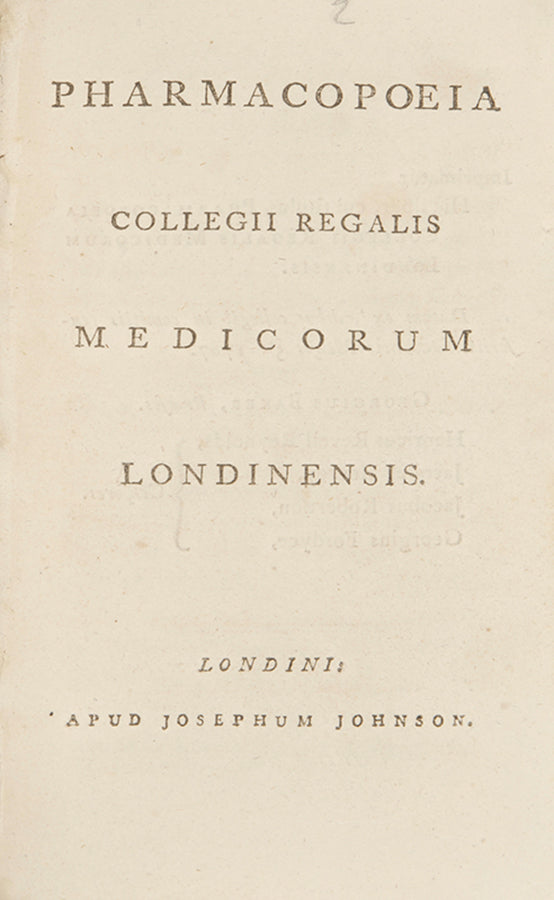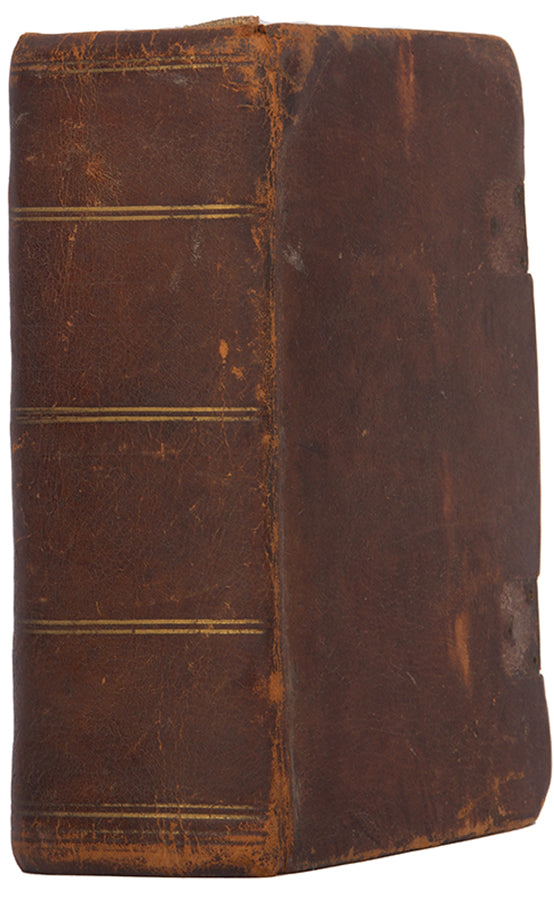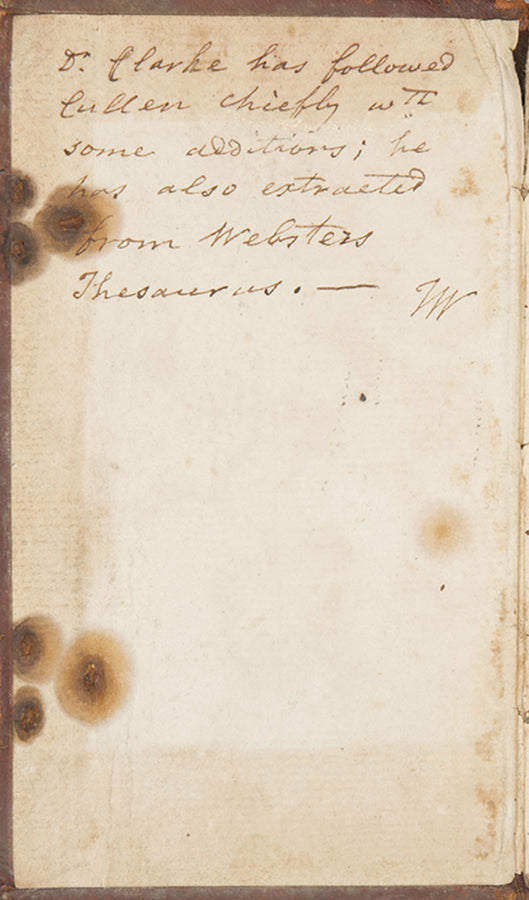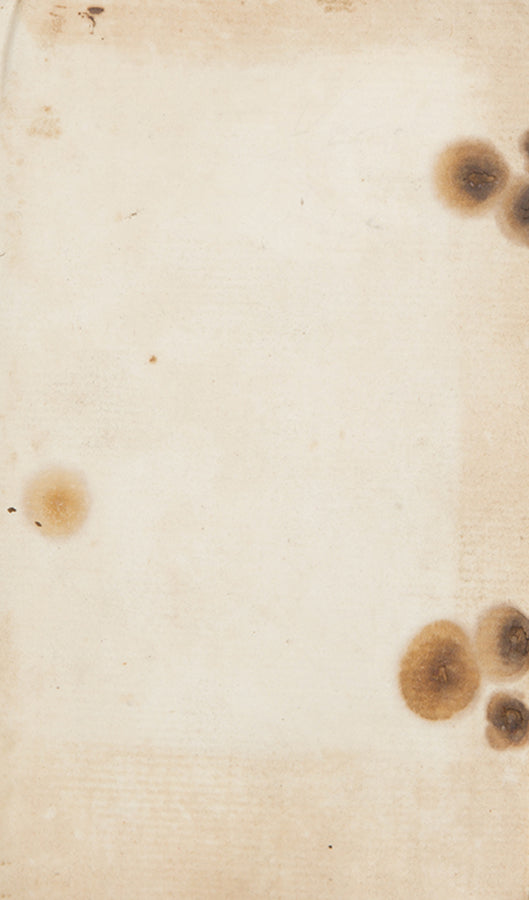CLARKE, E[dward] G[oodman].
Medicinæ Praxeos Compendium,
Medicinæ Praxeos Compendium,
symptomata, causas, diagnosin, prognosin, et medendi rationem, exhibens. Editio secunda, plurimum aucta et emendata. London, J. Johnson, et al, 1800; 224pp. [Bound with] Royal College of Physicians. Pharmacopoeia. London, Joseph Johnson, [c. 1788]; 166pp. [And] GRAVES, Robert. Pocket Conspectus of the London and Edinburgh Pharmacopoeias... Second edition, corrected and improved. London, J. Murray and S. Highley, 1799; 116pp. [And] Guy's Hospital. Pharmacopoeia, in usum valetudinarii... recensitae editionis. London, G. Phillips, 1803; 123pp. [And] St. Thomas' Hospital, Pharmacopoeia in usum noscomii Londinensis. London, T. Bensley, 1800; 59pp. [And] General Rules to be Observed in Raising and Continuing a Salivation: With the method of cure, and treatment of such dangerous symptoms, as may accidentally occur. London, 1775; 17pp.
Stock Code 114783
a professional medical sammelband
A very nice, pocket-sized sammelband containing six medical works dating from the turn of the nineteenth century, of which three are the official pharmacopoeias published by the Royal College of Physicians and Guy's and St. Thomas's Hospitals, and one an overview of the contents of the London and Edinburgh pharmacopoeias by an Irish physician. It is likely the the original compiler or an early owner had medical knowledge, as they have written an informed note on the front free endpaper pointing out that, 'Dr. Clarke has followed Cullen chiefly with some additions; he has also extracted from Webster's Thesarus'.Pharmacopoeias (lists of medical substances and their uses) had long been a popular genre, but they gained importance during the 17th century as medicine was increasingly professionalised and official publications could be used to centralise power within the physicians' societies and larger hospitals. For instance, the Royal College of Physicians' Pharmacopoeia Londinensis (text number two in this compilation), backed by a proclamation of King James, was 'an officially sanctioned list of all known medical drugs, their effects and directions on their use. No one was allowed to concoct any medicine or sell any substance if it did not appear in the Pharmacopoeia Londinensis'. Pharmacopoeias also proved popular with the educated general public, especially in English translations that began appearing around the middle of the century.
Aside from the official pharmacopoeias, text number one, by the London doctor Edward Goodman Clarke (d. 1811), is a list of diseases, their symptoms, and cures that was described by a contemporary as 'a very pretty view of the practice of medicine in excellent Latin' (Oxford Dictionary of National Biography). Text number three, a pocket compendium of the London and Edinburgh pharmacopeias in English, was edited by the prominent Irish physician Robert James Graves (1796-1853), who 'brought international renown' to the Meath Hospital in Dublin (Oxford Dictionary of National Biography). The final text, the work of an unknown author, describes in English the method of using mercury to treat venereal disease by 'raising a salivation' over the course of several weeks.
12mo (13 x 7.5 cm); contemporary manuscript notes on the front endpaper and verso of the title to the first text, rust marks and associated paper loss affecting early and late leaves, primarily blanks and endpapers; contemporary calf, double gilt fillets to spine panels, lacking the metal clasps, calf rubbed, headband slightly loose, very good condition.
Couldn't load pickup availability
Provenance
Provenance
Delivery
Delivery
We offer secure and express delivery on all local and international orders of rare books, maps and prints placed through this website.
About us
About us
Shapero Rare Books is an internationally renowned dealer in antiquarian & rare books and works on paper.
Our Bookshop and Gallery can be found in the heart of Mayfair at 94 New Bond Street, where most of our stock is available to view and on public display.
We exhibit at major international art fairs, including TEFAF (Maastricht and New York), Frieze Masters, Art Miami and Masterpiece London, as well as antiquarian & rare book fairs including New York, Paris, London, Los Angeles, San Francisco and Hong Kong.
Ask us a question
Ask us a question















